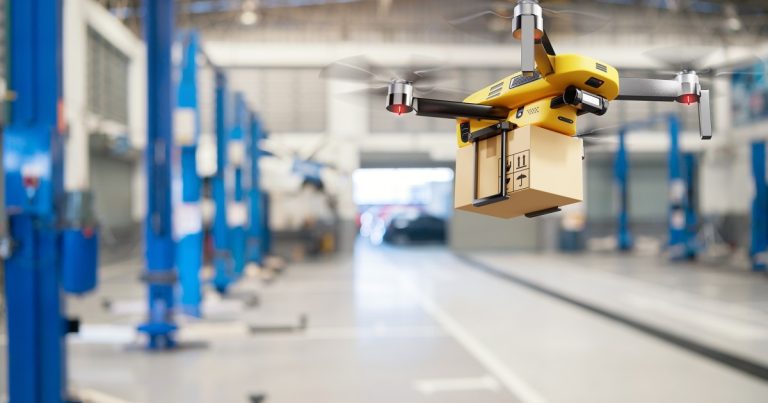With Amazon aiming to make 10,000 drone deliveries in Europe this year, and Walmart planning to expand its drone delivery services to an additional 60,000 homes this year in the US, companies are investing more R&D funding into drone delivery.
But are consumers ready to accept this change as the new normal?
Northwestern University's Mobility and Behavior Lab, led by Amanda Stattopoulos, an assistant professor of civil and environmental engineering, wanted to find out whether consumers are ready for robots to replace delivery drivers, in the form of automated vehicles, drones and robots. The team found that, socially, there is work to be done to change public perceptions about near-future technology.
“We need to think carefully about the impact of these new technologies on people and societies, and be attuned to their ideas about these changes,” said Statopoulos, the study's senior author.
The study, titled “Robots at your doorstep: Acceptance of near-future technologies for automated package delivery,” was published last week in the journal Scientific Reports. The researchers note a “complex and multifaceted” relationship between behavior and acceptance of near-future automated package delivery technologies.
While people were generally more willing to accept a robotic car as an alternative to a delivery person — perhaps due to already familiarity with self-driving cars — people did not like drones and robots as options. However, as delivery speed increases and prices fall, the likelihood of technology acceptance increases.
They also found that technology-obsessed consumers were more accepting of near-future technologies than less tech-savvy residents.
Shipping and logistics hubs should be placed “front and center” in city planning and design, according to Amanda Statopoulos.
Statopoulos is the William Paterson Junior Professor of Civil and Environmental Engineering at Northwestern's McCormick School of Engineering, where she studies the human aspects of new mobility systems. She is also a faculty member at Northwestern's Transportation Center. She said that after the pandemic, people have come to expect efficient delivery of e-commerce purchases as they increasingly work from home.
Maher Saeed, Ph.D. A graduate of the Statopoulos lab and a senior data scientist at UWISC, he is the lead author of the study.
“There is a paradox: we have difficulty reconciling the convenience and benefit of having fast, efficient delivery with its consequences, such as poor working conditions in warehouses, air pollution and crowded streets,” Statopoulos said. “We don't really see the other role we play as citizens or as users of the city. One role directly impacts the other, and we're both. With automated delivery, we can reduce some of these issues.”
The team designed a survey to assess the preferences of 692 US participants, asking questions about different delivery options and variables such as delivery speed, package handling and overall perceptions.
Although new delivery methods represent an exciting opportunity, “we're not there yet” socially, Stathopoulos said. As companies increase drone deliveries, partly due to labor shortages and partly because current systems cannot meet the massive volume of e-commerce deliveries, researchers warn that these innovations may fail due to a lack of public acceptance.
Statopoulos said she believes shipping and logistics hubs should be placed “front and center” in city planning and design, as is the case in some European cities, to recognize their importance and role in quality of life. Policymakers will also need to become part of the conversation as more drones enter the airspace and work shifts. Statopoulos believes that none of this will work until companies start enhancing their unique systems.
“On the planning side, we need to make sure that we accept the fact that the huge amount of deliveries is going to shape our cities,” Statopoulos said. “Collaboration, coordination and information sharing between companies has been a constant challenge – but it won't work if everyone has their own technology. It defeats purpose and builds redundant and overlapping systems.
However, by listening to and conducting more frequent user acceptance assessments of technologies, Statopoulos argues that policymakers and businesses can prepare for the future and work to overcome anxiety and hesitation in accepting new technologies.

